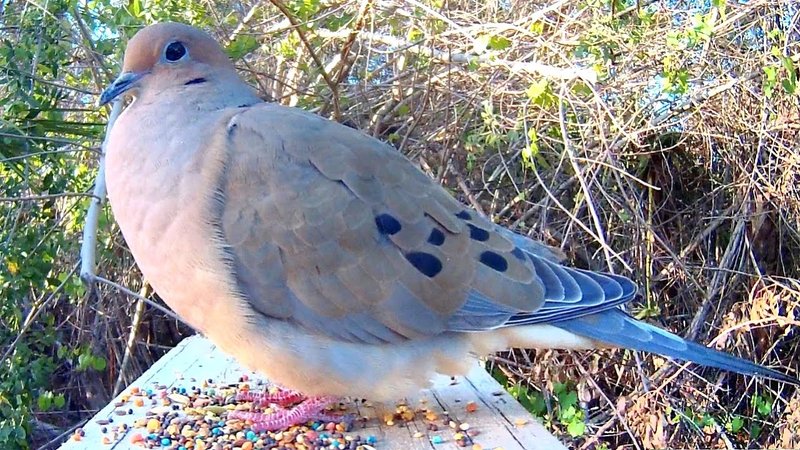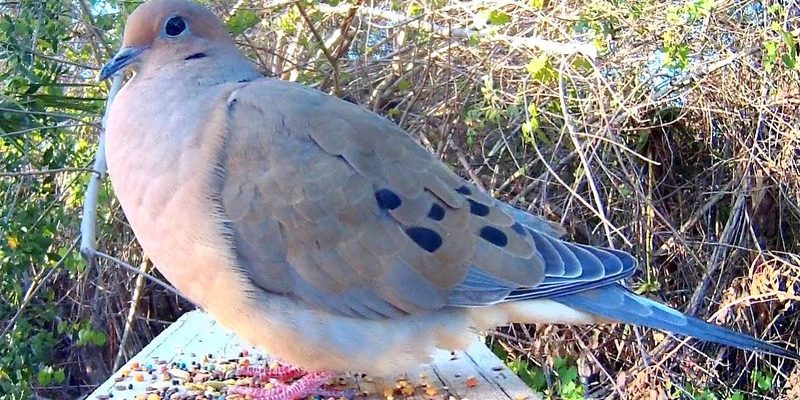
Imagine you’re sitting outside, sipping coffee on your porch, and a mourning dove lands nearby. The moment it starts to vocalize, you’re drawn in by the rhythm and tone. You might not realize it, but each coo tells a story—from wooing a mate to signaling distress. In this blog, we’ll unpack the various vocalizations of mourning doves and what they signify. So, let’s dive into the world of these gentle birds!
The Sound of Mourning Doves
Mourning doves have a soft and soothing cooing sound that can be quite mesmerizing. Their vocalizations consist of a series of low, mournful coos that can sound like a gentle lullaby. This distinctive tone is not just a random noise; it actually plays a significant role in their behavior and interactions with one another.
When you hear a mourning dove coo, it can range from a single sound to a complex series of notes. Typically, the phrases include two to three distinct coos followed by pauses. The soothing sound is often associated with peace and tranquility. It’s interesting to note that these vocalizations can vary in pitch and duration, depending on the bird’s mood or intent.
You might be wondering why they produce such a unique sound. It turns out that their vocalizations serve several purposes, including attracting mates, communicating warnings, and even claiming territory. Understanding these sounds is crucial for appreciating the social lives of mourning doves.
During the breeding season, mourning doves engage in romantic rituals that include soft cooing calls. These courtship calls are often part of a display where the male fluffs up his feathers and struts around, trying to impress potential mates. The gentle coos serve to attract females and establish a bond between partners.
The male typically initiates this vocalization, often calling from a high perch like a tree branch or rooftop. The coos can signal that he’s healthy and ready to mate, showing off his best vocal talents. This is a critical time for the survival of the species, and the art of wooing is essential in ensuring their legacy continues.
Interestingly, the quality of the call can influence a female’s choice. Females often prefer males with richer and more pronounced calls, which can indicate good genetics and overall fitness. So, next time you hear those sweet sounds, think of it as a romantic serenade echoing through nature.
Mourning doves also use their cooing calls for communication among their kind. Beyond courtship, these vocalizations play a vital role in maintaining social dynamics within a flock. You can often hear their unique calls when they gather to feed, signaling safety or alerting each other to potential dangers.
For instance, a sharp coo might mean that there’s a hawk nearby. In these moments, doves might quickly become alert, and you can see them flock together, seeking shelter in nearby trees or bushes. This is part of their survival instinct, and their vocalizations are essential for coordinating and ensuring safety in numbers.
This communication isn’t just about danger; mourning doves also use cooing to express their contentment. You’ll often hear these sounds while they’re resting or preening, indicating that everything is calm and safe. It’s a gentle reminder that these birds live in a social world where they constantly interact through sound.
In addition to their soft coos, mourning doves have a more aggressive vocalization that serves to establish and defend territory. When a male feels threatened by another dove encroaching on his space, he’ll produce a series of sharp, distinctive calls. These sounds are characterized by a harsher tone and can effectively warn intruders to back off.
This aggressive call is crucial to maintaining their territory, especially during breeding season. By vocalizing their dominance, they can deter rivals without needing to engage in physical confrontations. It’s fascinating how sound can be a powerful tool in nature—sometimes, a simple call can be enough to avoid conflict.
You might also notice that the intensity of these calls can change depending on the level of threat. If a rival appears particularly aggressive, the resident dove may increase the volume and frequency of its calls. This display of strength can not only protect their space but also impress potential mates nearby.
Mourning dove vocalizations are a rich tapestry of sounds that communicate a wide range of emotions and intentions. They showcase the complexity of these birds’ lives and their interactions with each other. To recap, here are the main types of vocalizations:
- Courtship Calls: Soft and melodic, aimed at attracting mates.
- Communication Calls: Used for social bonding and signaling safety.
- Aggressive Calls: Sharp and pronounced to defend territory against intruders.
By understanding these vocalizations, we can appreciate the depth of mourning doves’ social behaviors. The next time you hear their gentle coos or sharp calls, you’ll have a better grasp of what they mean. It’s like tuning into a fascinating conversation happening right in your backyard.
Mourning doves offer us a beautiful opportunity to connect with nature in our daily lives. Their vocalizations are more than just pleasant sounds; they are a complex form of communication that reveals the richness of their social interactions. By paying attention to these calls, we can deepen our understanding of these lovely birds and the world around us.
Next time you hear that soft coo, take a moment to listen and reflect on what it might mean. Whether they’re courting, calling out to a friend, or defending their territory, mourning doves remind us how important communication is in all walks of life. So, let’s keep our ears open and enjoy the sweet symphony of nature’s serenade!

